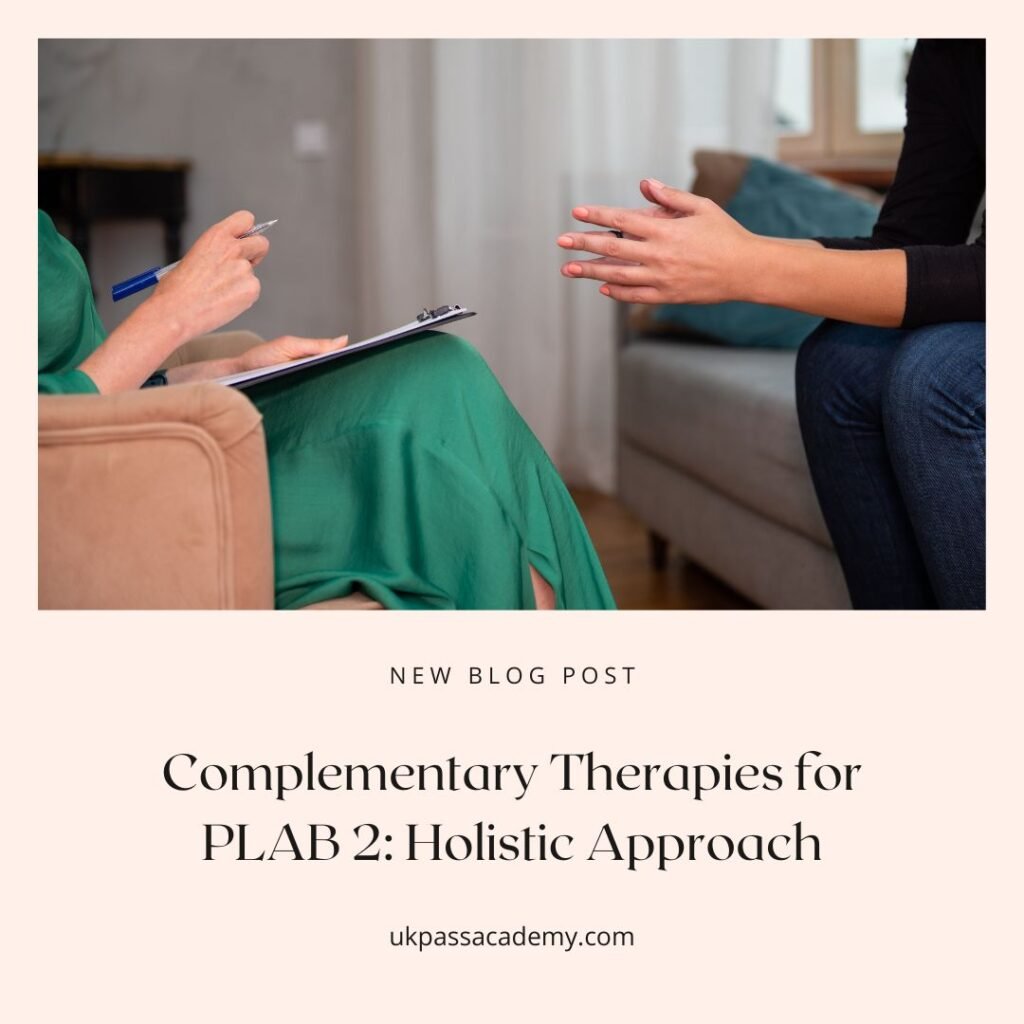Holistic Care in Modern Medicine: Integrating Complementary Therapies into PLAB 2 Practice
In recent years, there has been a growing recognition of the importance of holistic care in modern medicine. Holistic care emphasizes the integration of physical, mental, and emotional well-being, and recognizes the interconnectedness of these aspects in promoting overall health. In the context of the PLAB 2 exam, which assesses the clinical skills of international medical graduates seeking to practice medicine in the UK, it is crucial to consider the role of complementary therapies in providing comprehensive care to patients. This article explores the benefits and challenges of integrating complementary therapies into PLAB 2 practice, and highlights the need for a more holistic approach to patient care.
The Benefits of Integrating Complementary Therapies
Integrating complementary therapies into PLAB 2 practice offers several benefits for both patients and healthcare professionals. Firstly, complementary therapies can enhance the effectiveness of conventional medical treatments. For example, acupuncture has been shown to alleviate pain and reduce the side effects of chemotherapy in cancer patients. By incorporating acupuncture into their practice, PLAB 2 doctors can provide a more comprehensive and personalized treatment plan for their patients.
Secondly, complementary therapies can improve patient satisfaction and overall well-being. Many patients are seeking alternative and holistic approaches to healthcare, and by offering complementary therapies, PLAB 2 doctors can meet the diverse needs and preferences of their patients. This can lead to improved patient-doctor relationships and better treatment outcomes.
Furthermore, integrating complementary therapies can contribute to a more patient-centered approach to healthcare. By considering the physical, mental, and emotional aspects of a patient’s health, PLAB 2 doctors can develop personalized treatment plans that address the root causes of illness, rather than just treating the symptoms. This can result in more effective and sustainable healthcare interventions.
The Challenges of Integrating Complementary Therapies
While there are numerous benefits to integrating complementary therapies into PLAB 2 practice, there are also challenges that need to be addressed. One of the main challenges is the lack of standardized training and regulation for complementary therapists. Unlike conventional medicine, which has strict educational and licensing requirements, complementary therapies often lack standardized training programs and regulatory bodies. This can make it difficult for PLAB 2 doctors to identify qualified and competent practitioners.
Another challenge is the potential for interactions and conflicts between conventional medical treatments and complementary therapies. Some complementary therapies may interfere with the efficacy or safety of certain medications or treatments. It is important for PLAB 2 doctors to have a thorough understanding of both conventional medicine and complementary therapies to ensure the safe and effective integration of these approaches.
Additionally, there may be cultural and societal barriers to the acceptance of complementary therapies. Some patients and healthcare professionals may hold skeptical views towards these therapies, which can hinder their integration into PLAB 2 course. It is essential to promote awareness and education about the benefits and evidence-based use of complementary therapies to overcome these barriers.
Towards a More Holistic Approach to Patient Care
Despite the challenges, the integration of complementary therapies into PLAB 2 practice is a step towards a more holistic approach to patient care. By recognizing and addressing the physical, mental, and emotional aspects of health, PLAB 2 doctors can provide comprehensive and patient-centered care that goes beyond the treatment of symptoms.
To facilitate the integration of complementary therapies, it is important for PLAB 2 doctors to undergo additional training and education in these modalities. This can include courses on acupuncture, herbal medicine, mindfulness, and other complementary therapies. By acquiring the necessary knowledge and skills, PLAB 2 doctors can confidently incorporate these therapies into their practice and provide evidence-based care to their patients.
Furthermore, collaboration and communication between conventional healthcare professionals and complementary therapists are essential for the successful integration of these approaches. By working together, healthcare professionals can ensure that complementary therapies are used in a safe and coordinated manner, and that patients receive the most appropriate and effective treatments.
Conclusion
The integration of complementary therapies into PLAB 2 practice has the potential to enhance patient care and promote a more holistic approach to medicine. While there are challenges to overcome, with proper training, education, and collaboration, PLAB 2 doctors can effectively integrate complementary therapies into their practice and provide comprehensive and patient-centered care. By embracing a holistic approach, PLAB 2 doctors can contribute to the overall well-being and satisfaction of their patients.

